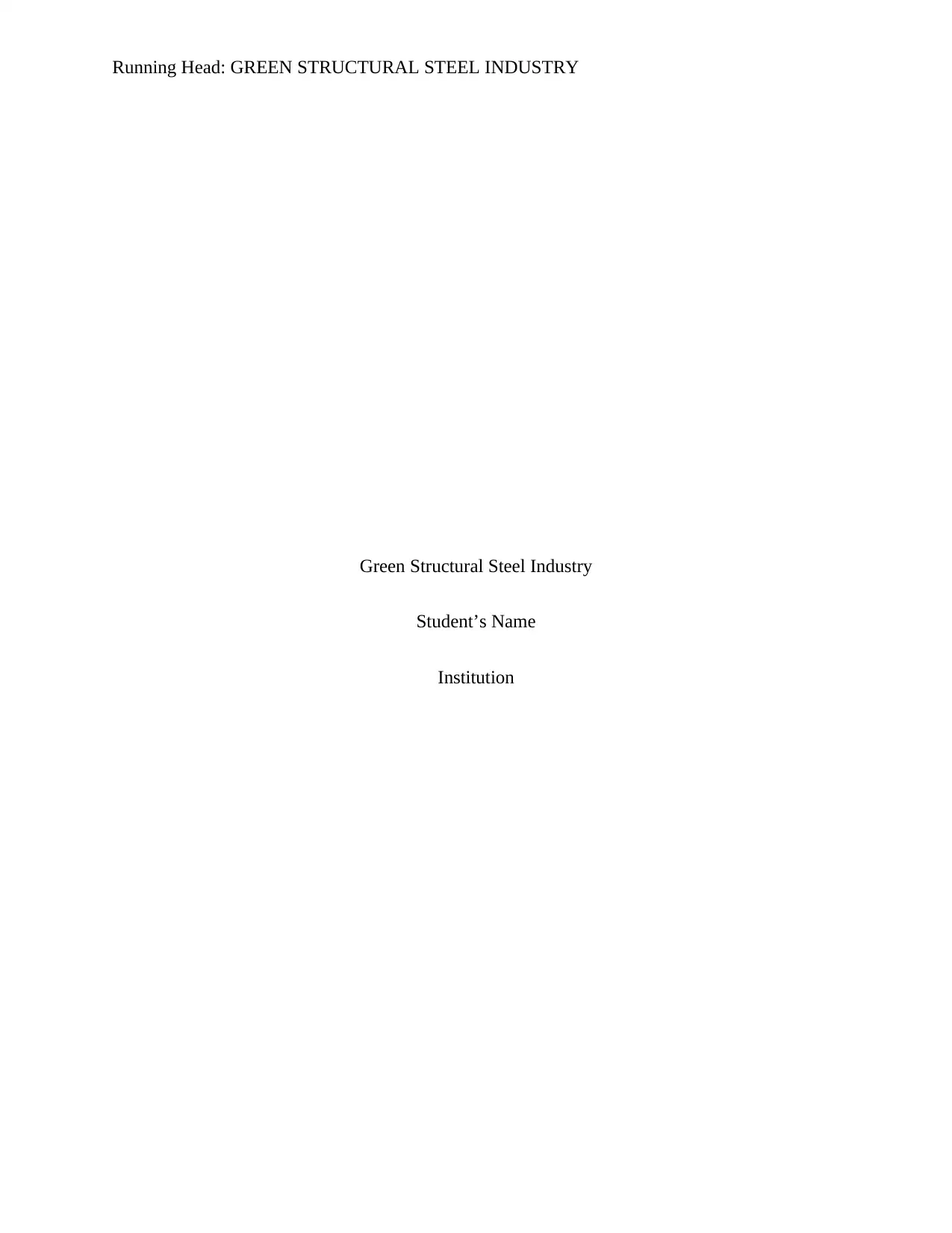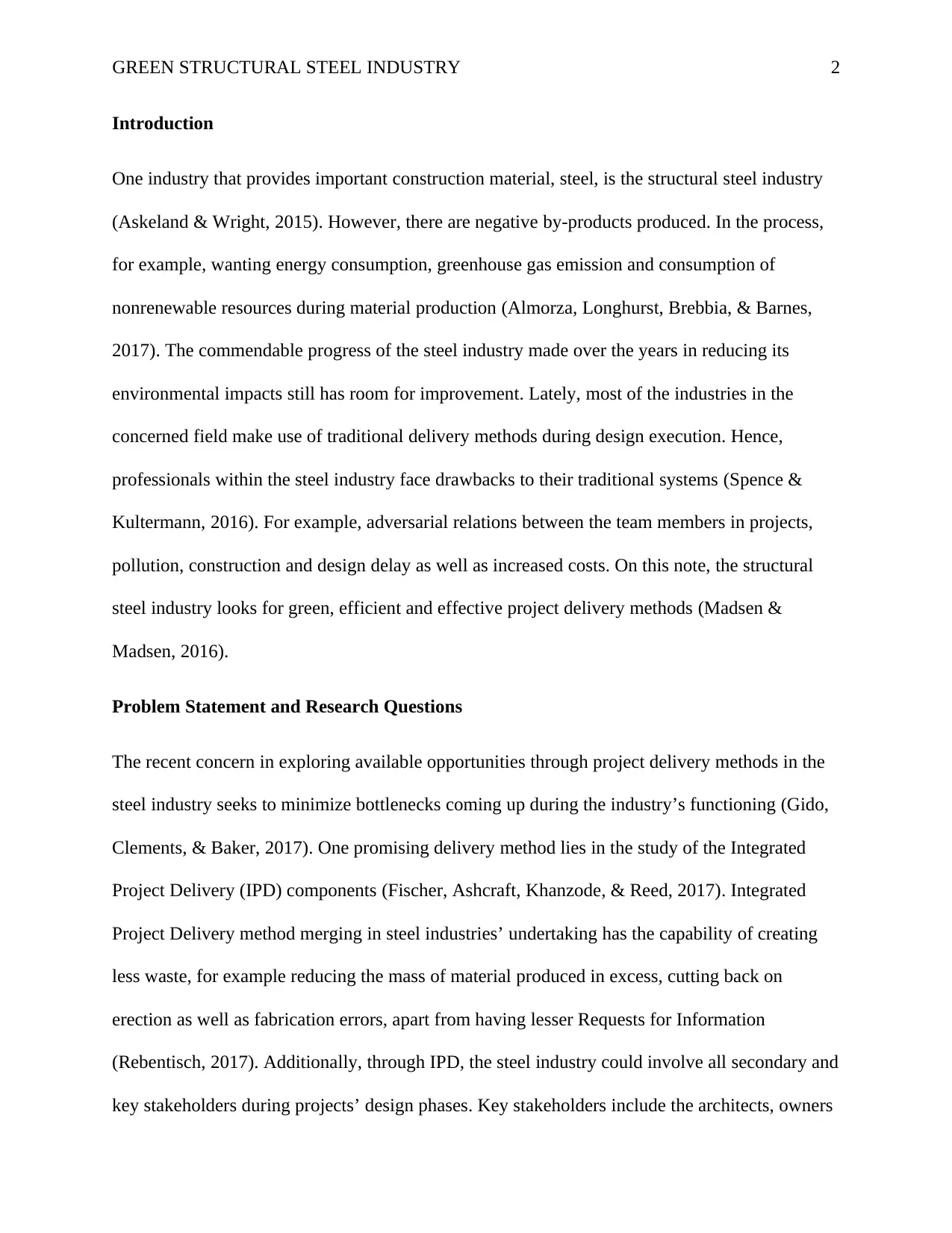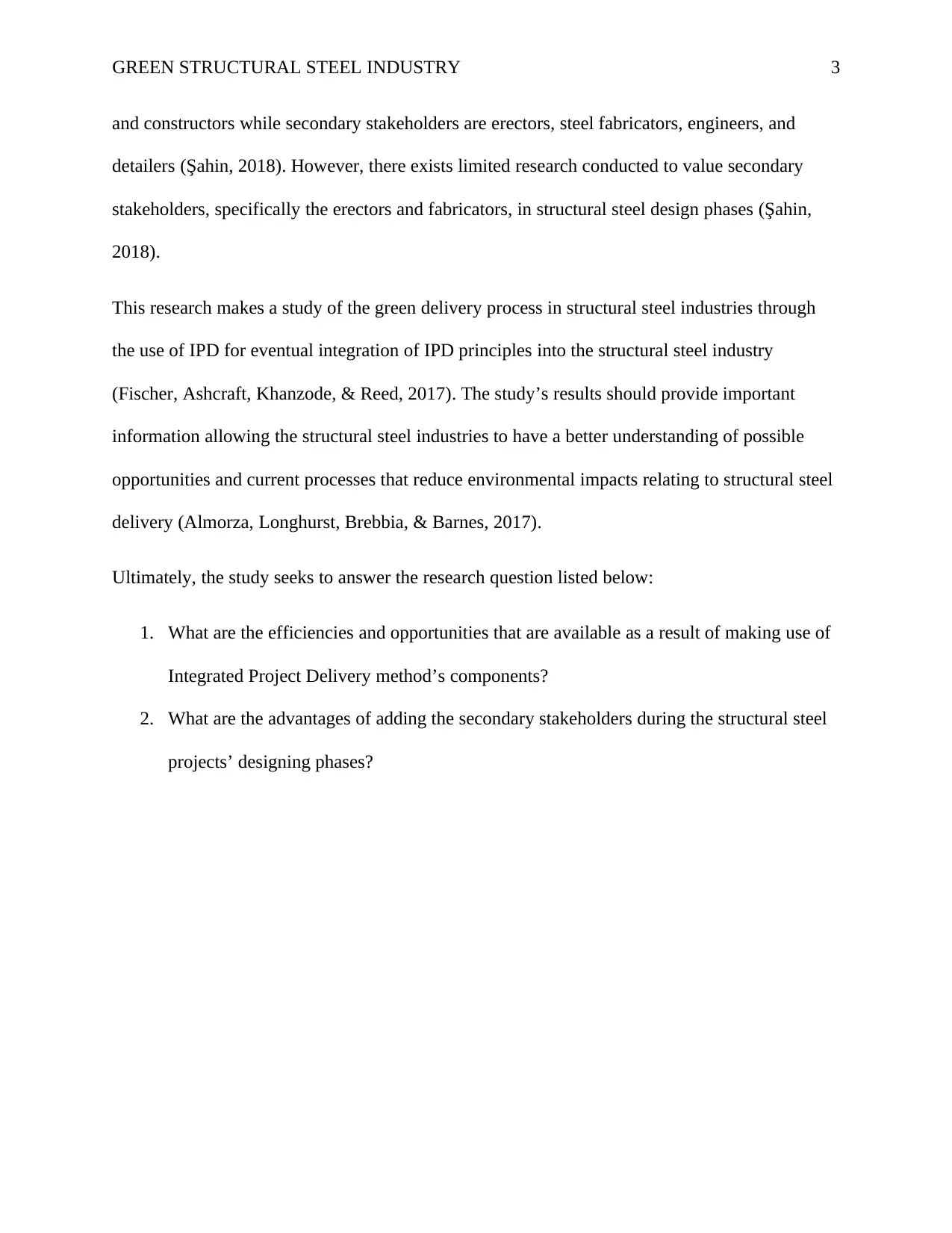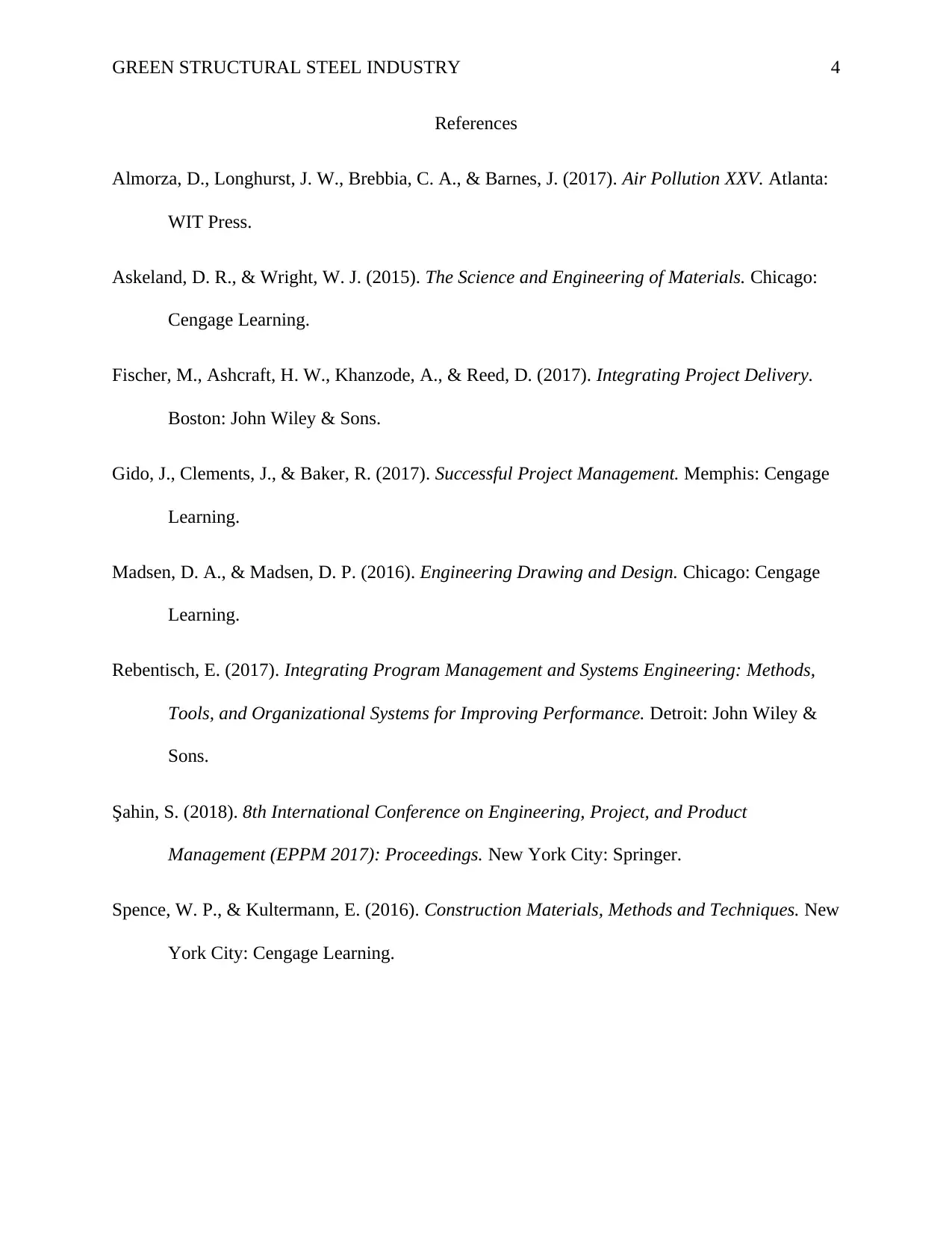Analysis of Green Project Delivery in Steel Industry (GRAD 695)
VerifiedAdded on 2023/01/03
|4
|794
|52
Report
AI Summary
This report, prepared for GRAD 695, investigates the implementation of Integrated Project Delivery (IPD) in the green structural steel industry. It begins by highlighting the environmental challenges within the steel industry, such as energy consumption and greenhouse gas emissions. The study aims to explore the efficiencies and opportunities of IPD, focusing on the involvement of secondary stakeholders like erectors and fabricators. The research poses two key questions: What efficiencies arise from using IPD components, and what advantages come from including secondary stakeholders in the design phases? The report reviews existing literature and proposes a research design to further understand how IPD can reduce environmental impacts and improve project delivery in the structural steel sector. The paper emphasizes the need for a more sustainable approach to project delivery, seeking to minimize waste, reduce errors, and streamline communication through the integration of key and secondary stakeholders.
1 out of 4





![[object Object]](/_next/static/media/star-bottom.7253800d.svg)